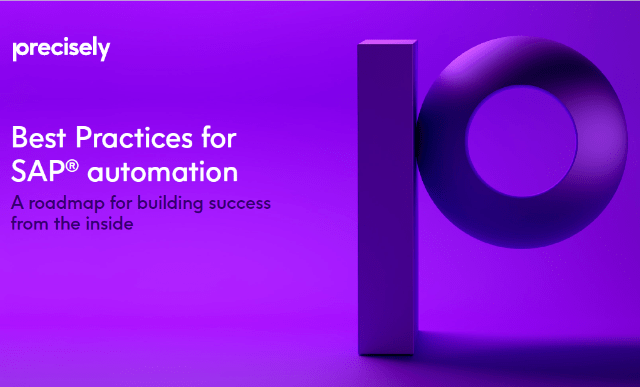With a single SAP instance covering five lines of business (LoBs), VSP Global has a clear line of sight across its various LoBs and has become a global leader in end-to-end vision care and services, including vision benefits, eyewear, practice management software, e-commerce, and lens technology. This visibility helps the company serve its many customers, including 80 million benefits members worldwide and the buyers of more than 18 million frames each year from Marchon Eyewear, VSP Global’s eyewear division.
For this multi-billion-dollar enterprise, SAP software runs core, mission-critical business processes that touch all LoBs. Quality is an important value at the company, and a priority is ensuring every business process and supporting system functions as it should at all times. This underscores the importance of business process testing for VSP Global, as the SAP ERP platform continues to grow on a single instance.
As the business has grown, the pace of change and innovation in SAP technology and other enterprise systems has continued to accelerate at VSP Global, putting pressure on quality assurance processes. “With so many changes being introduced, it was next to impossible to run a full regression test of our core business processes manually,” says Eric Woodworth, PMP in the SAP Center of Excellence (CoE) at VSP Global.
Difficulties rose to the forefront late in 2014, when VSP Global did a cost analysis of its manual testing procedures during an SAP upgrade and discovered that manual testing at the level and pace required would be cost prohibitive. The business also determined that an investment in automated functional testing could meet its needs and deliver an attractive ROI. After carefully evaluating several automation solutions, VSP Global decided to implement Worksoft Certify, the high-velocity business process testing software from Worksoft that ensures business process continuity during changes to mission-critical enterprise systems.
“We’ve been an innovative company since day one. So being able to run the numbers and make a business case to our executives that automating our testing environment had a short ROI was extremely beneficial,” Woodworth says. “It ended up being a no-brainer.”
 We’ve been an innovative company since day one. So being able to run the numbers and make a business case to our executives that automating our testing environment had a short ROI was extremely beneficial.
We’ve been an innovative company since day one. So being able to run the numbers and make a business case to our executives that automating our testing environment had a short ROI was extremely beneficial.

— Eric Woodworth, PMP, SAP Center of Excellence, VSP Global
The Daily “Lights-Out” Approach: Seeing Is Believing
When VSP Global implemented Worksoft Certify in 2015, the company focused its automated regression testing on about 50 mission-critical, integrated business processes in SAP ERP — most of which entail dozens of transaction codes that would take many hours to test manually. With its new automation capability, VSP Global set up an after-hours, or “lights-out,” testing environment so that all of these core business processes could be checked and validated on a daily basis.
With Worksoft Certify running on a virtual server, VSP Global conducts lights-out testing against four environments: two development environments and two quality assurance environments. This setup allows the company to focus one set of environments on small enhancements and changes while using the others for lengthier, more complex ongoing projects that may last upward of a year. Roughly 15 virtual workstations on the server run scheduled tests throughout the day and at night, depending on workloads for continuous coverage. Included in this business process testing environment are additions to its SAP Apparel and Footwear industry solution, such as software for credit card payment processing, broker and sales commissions, multi-carrier shipping, and logistics.
With VSP Global’s newly configured testing environment, its quality assurance processes became much more aligned with its worldwide footprint of 24/7 transactions. “Last year, we went live with over 15 SAP projects, and without the automation in place, we would have increased the risk of introducing possible failures into our production environments,” says Woodworth. “We will continue to use Worksoft to run daily lights-out testing to ensure our systems are stable.”
At the same time, the new automation approach also brought to light new challenges. Because most of the mission-critical business processes run by SAP ERP touch every LoB, there was an increasing need to identify and prioritize the appropriate processes to test in its unified enterprise regression suite. Tracking and standardizing process changes across LoBs also became a more important issue.
A Unified Vision: The SAP Center of Excellence
A key factor that helped to meet these challenges was positioning standardized testing processes across the SAP CoE. This standardization was instrumental in creating a single, unified vision for the optimal use of test automation across the company.
“Initially, one thing that helped us tremendously was setting up workshops with CoE management and CoE team members to lay out different integration scenarios for our regression suite,” Woodworth says. “We would go over what we had developed, and CoE team members would bring new opportunities to the table and identify the right processes to be tested for their particular LoBs. They understood the automation because they helped to develop it and ensured that it was correct for each business scenario to be tested.”
By bringing all CoE stakeholders to the table, VSP Global consolidated its knowledgebase and could identify and mitigate potential impacts to downstream processes before it developed and ran business process tests. “The CoE team was integral to arriving at standardized processes across all projects and business changes,” says Woodworth. “The CoE set this forth as a quality standard for all new projects, so even if there were 15 simultaneous projects, every team now has the same consistent process to follow when it comes to test processes and automation.”
What this did, according to Woodworth, was save even more time and create efficiency that goes beyond automation alone, because everyone can easily tell — regardless of the project — which scenarios will be tested, how they’ll be tested, and what the results mean. These are continually reviewed by the automation team. Also, for any future technology changes, the team can use the automation portfolio as a template or library to more easily identify which processes lend themselves to automated testing.
“The next time we have to test a particular scenario, we can just add it to our automated regression suite that is run on a regular basis,” Woodworth says. “This means that, in the long term, we know a particular business process is working.”
Eyes to the Sky
While some companies measure success based on the percentage of automated processes, VSP Global focuses on what Woodworth says is “quality over quantity,” honing in almost exclusively on the business functions of SAP ERP and its add-ons, because its connected business processes are most vital to VSP Global’s business divisions.
In the course of doing so, VSP Global discovered additional automation use cases beyond simply automating business process testing. One is related to staging data for mission-critical allocation runs (ARUNs) in the SAP Apparel and Footwear industry solution. “With Worksoft Certify, we can easily simulate thousands and thousands of sales orders so we can test the process of allocation in the SAP system,” says Woodworth, whose team has applied automation to eliminate a time-consuming manual task that couldn’t scale for more than a miniscule number of sales orders. With Worksoft Certify, a request for staging data entails just a few minutes of work to provide everything needed for downstream testing for even the largest ARUN. (For more about Worksoft Certify, see the sidebar at the end of the article.)
Another unexpected benefit was the ability to leverage intelligent automation to tame the complexity of the SAP Apparel and Footwear solution’s three-dimensional grid values, meaning that data conversion requirements were met and the data could be loaded into VSP Global’s production environment without sidetracking a project. “That saved us hundreds of hours as opposed to if we had to put forth that effort manually, which we were otherwise looking at,” Woodworth says. “Worksoft Certify has delivered unexpected benefits, and that was one of the bigger ones.”
No Going Back
Since completing the Worksoft project, Woodworth says that it’s clear that going back to all-manual business process testing is out of the question for VSP Global. In fact, a higher percentage of automated business process testing is in its future. “Every company that runs SAP software should have an automation tool. It’s not even a question,” he says. “I’ve been a consultant and have been doing SAP implementations for 20 years. None of the projects I worked on had a tool like this, and the difference between a company that has automation and one that doesn’t is pretty clear. Worksoft was the best fit for us based on our requirements, and it’s proven to be a very good investment.”










